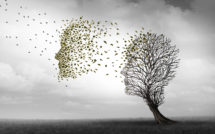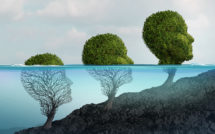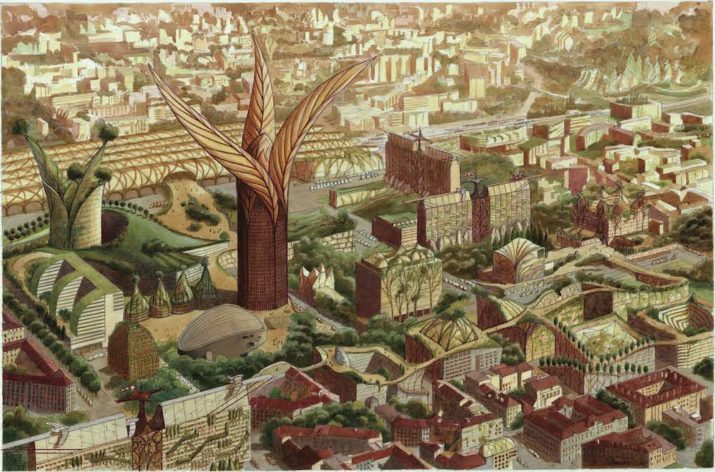
This is part of our special feature, Rethinking the Human in a Multispecies World.
In this exhibit, three artists participate in the special feature on Rethinking the Human to join the reflection on what it means to be human in a multispecies world. Together, they explore and share their respective visions of the ways in which the human can be reimagined through the development of new perspectives on bodies and cities that acknowledge and partner with nonhuman universes at the individual and societal scales. In Gesine Marwedel’s work, human limbs are made to visually disappear in order to better reveal other shapes that interrogate both the nature of humanity and the place of humanity in nature, either by evoking closeness with the animal world or by highlighting what we believe makes us human—our mind. The body, enhanced by colorful paint, contorts in a staging technique that suggests that animals are part of us and we part of them. Marwedel also guides us into an interrogation about the essence of “human,” as she showcases the brain, which acts as a question mark in the face of the promises that artificial intelligence advances for possible posthuman futures, where our relationship with the nonhuman may well include robots. Like Marwedel, Emma Fay manipulates the body, not merely as a context for her painted sceneries, but to express the connections between the materiality of the body’s sensitive surface—the skin—and deep individual emotions, placing the bond between the corporeal and a natural imaginary at the core of what it means to simply be. By integrating natural elements into their apprehension of the outside world and their personal wellbeing, the models in her work here approach elements—water—and outdoor landscapes as pathways to equilibrium in their mental and physical health. Finding this balance, in particular through well-dwelling, is also the focus of architect and visionary illustrator Luc Schuiten, who creates stunning surrealist displays of urban vegetal utopias. In his skillful reinvention of the city between reality, dream, and science fiction, most viewers will remain enchanted by the creative and delightful details and the seemingly optimistic possibilism that every line translates. But some may also be troubled by the message his drawings carry about how disconnected from nature our urban living practices have become. His futuristic botanical rendering of recognizable or imaginary cities where buildings are constituted of living materials, which he calls “archiborescence,” is a reminder of what has been missing to bring us harmony in our interaction with the plant-world—and by extension with the natural world. His tree homes reconceptualize the city through an osmotic relationship between place, people, and the nonhuman. Although poetic and hopeful, his anticipative arboreal approach to the built environment and the oneiric atmospheres he produces can also strike as a botanical echo to a De Chirico like metaphysical gaze on the urban, emerging with a warning and call for action as human-made features are redesigned as branches, leaf veins, trunks, canopies, hedges, and where if stillness seems to dominate, change implicitly impends.
In adopting an eco-centric view, Marwedel, Fay, and Schuiten propose alternative understandings of the place of the human in a complex world where environmental degradation and the treatment of animals have become major stakes. As people seek balance through more collaborative ties with “other-than-human” realms, the three artists lend their talent to transform the visible, from which they invent a new reality and delineate aspirations, if not answers, to fix the incoherent relationships humans have maintained with the natural world. In the artists’ respective works, nature is no longer submissive and subjected, but plays out its agency away from anthropocentric hierarchies that position the human on top of all life forms. Marwedel, Fay, and Schuiten open the way for imagining organic futures that are more curious, inclusive, and respectful of all existences, and where humanity as we have constructed it around a nature-culture schism is challenged.
—Hélène B. Ducros for EuropeNow
Creating illusions through bodypainting
Gesine Marwedel relies on the human body as a medium in very concrete ways. However, her artwork transcends the human through the creation of illusions when, under her brush, bodies disappear into shadow and ethereal transparency as to become mere suggestions. She started developing her style around the fusion of the human with the non-human in 2008 after being asked to paint a model’s face for a photoshoot. For her first animal full bodypainting, she found inspiration during a walk when she encountered a swan that she imagined representing out of a specific position of the human body while she would make certain body parts disappear into the background. While “Flamingo” is the most famous of her creations, she has bodypainted numerous other animals and objects, as she has developed her ability to see human shapes in animals, plants, or objects, at the same time as she conversely envisions non-human shapes out of human body positions. Marwedel also engages with bodypainting as therapy, which she sees as helping with self-confidence, body image, self-esteem, and sensory awareness, and leading to better acceptance of physical changes―such as scars―when patients can look at themselves in the mirror without focusing on injured body parts. She has also worked with autistic children and cancer patients. Whether bodypainting entails the whole body or a single body part, she believes that, even if it alone cannot heal, it is part of the toolkit in the therapeutic process.
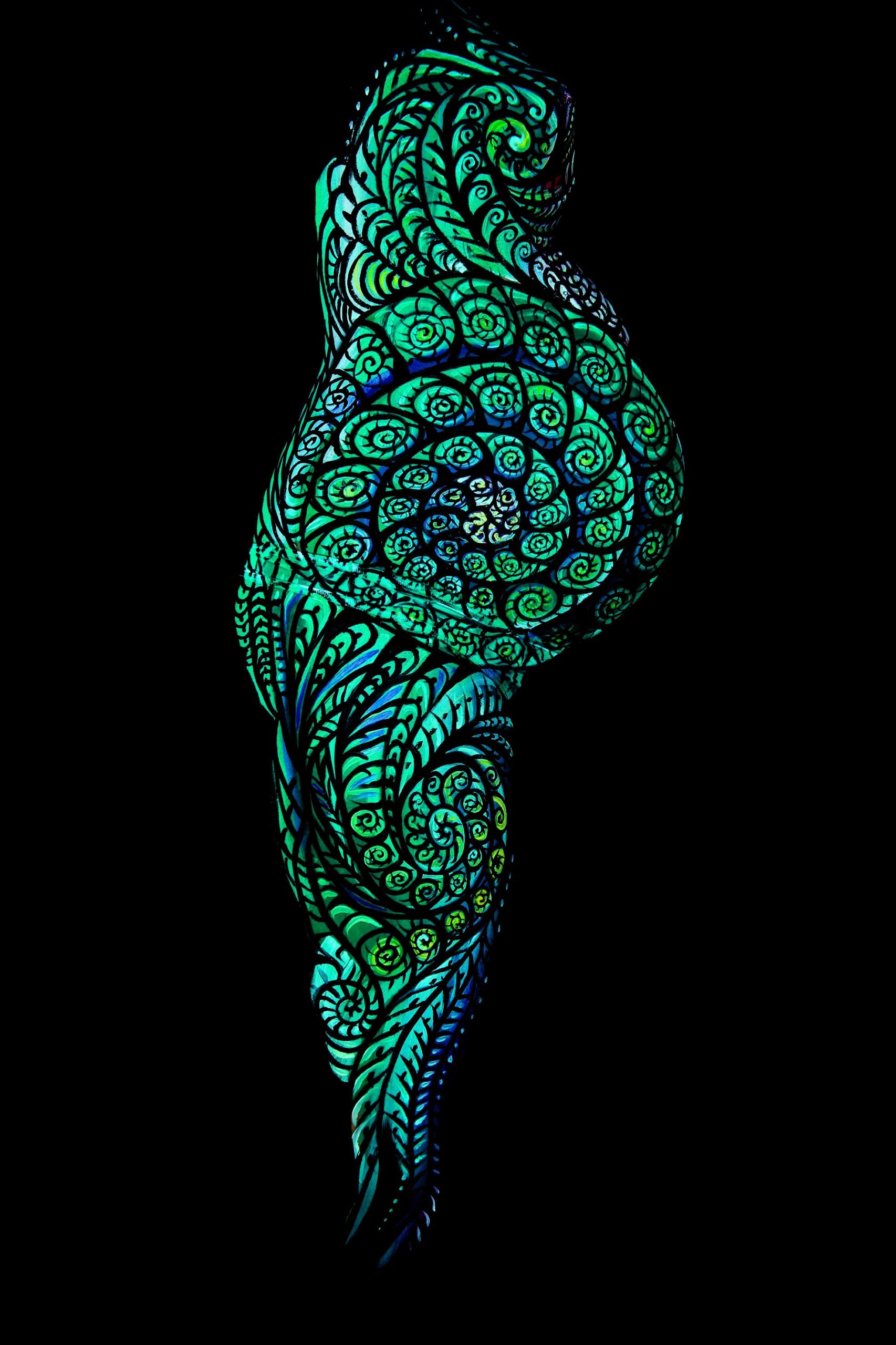
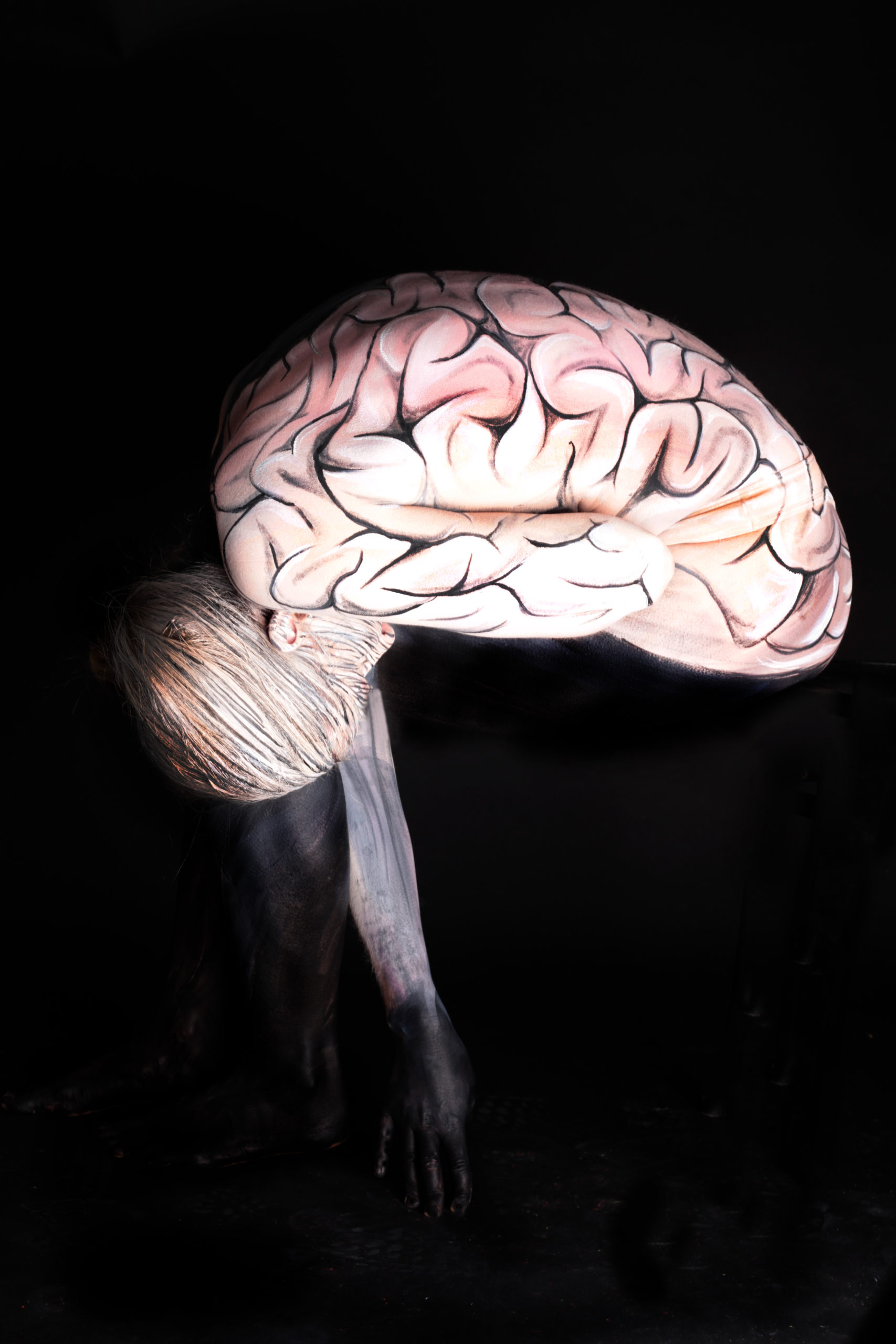
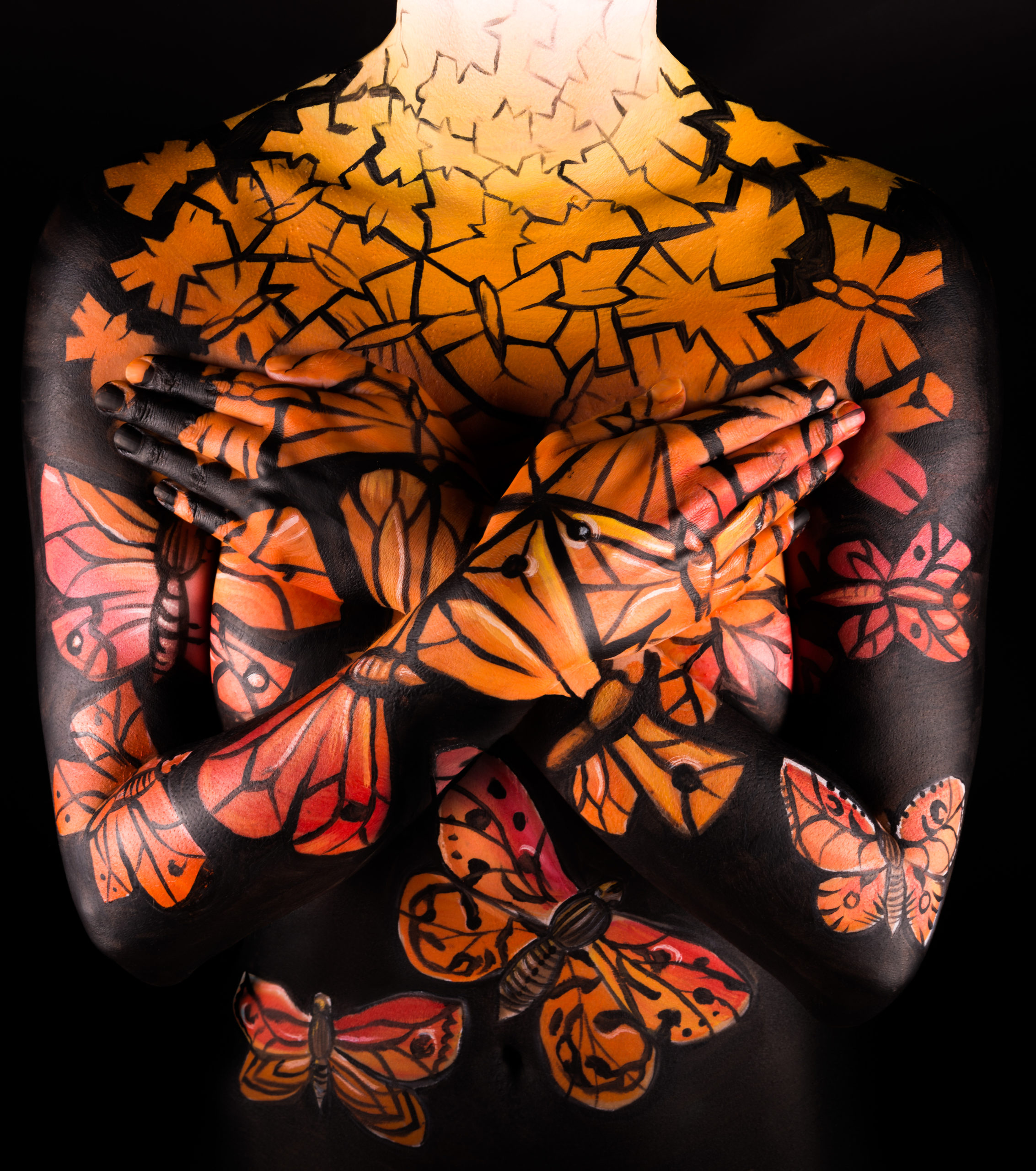
Gesine Marwedel was born in 1987 in Eckernförde, Germany, and raised in Dortmund. After finishing high school, she worked in an Indian orphanage for several months. She then obtained a BA in rehabilitation science and worked as a speech therapist while also completing a degree in creative therapy. As a licensed psychotherapist, she has worked as an art and creative therapist at an autism therapy center. She became a freelance artist in 2016.
Fusioning corporeal, mental, and natural worlds
The models featured here, Joanne Alexander and Alvin Jarvis, are part of Emma Fay’s exhibit “Remedies and Reason” that uses body painting to explore deep, personal views of what wellbeing means to individuals and show that we all have our own understanding of what it means to be well. She worked with participants of the Community Learning Project (CLiP), the West Indian Senior Citizens Leicester Ageing Together Project, and members of the public to understand their impressions of wellbeing and mental health. After interviewing the participants individually, the artist portrayed their perceptions of mental wellbeing through the medium of body art. The exhibition was coordinated by Pamela Campbell-Morris and funded by the University of Leicester’s “Health Matters” community engagement project, thanks to the generosity of the Edith Murphy Foundation. Fay thanks the participants—in particular the models—as well as photographer David Wilson Clarke.
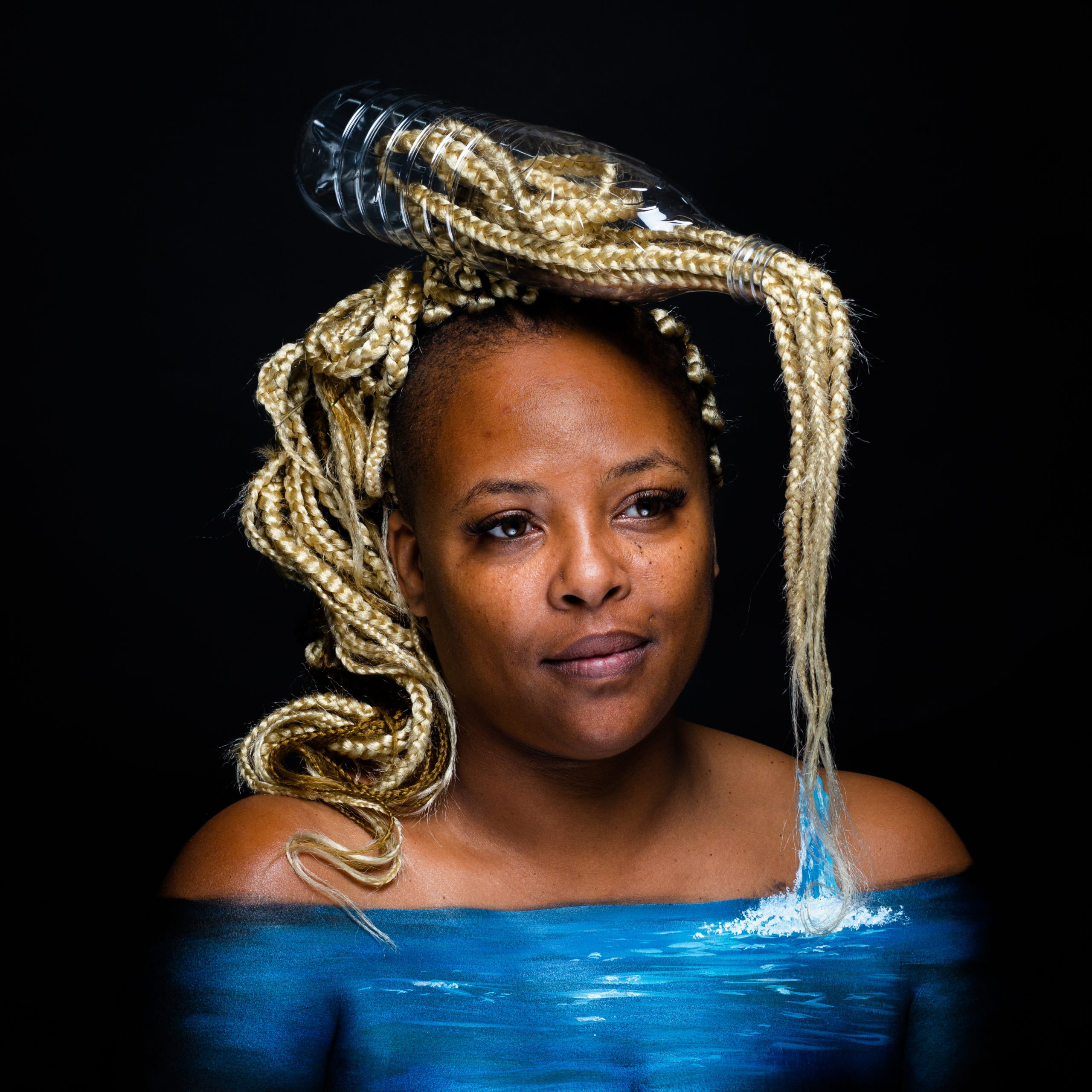
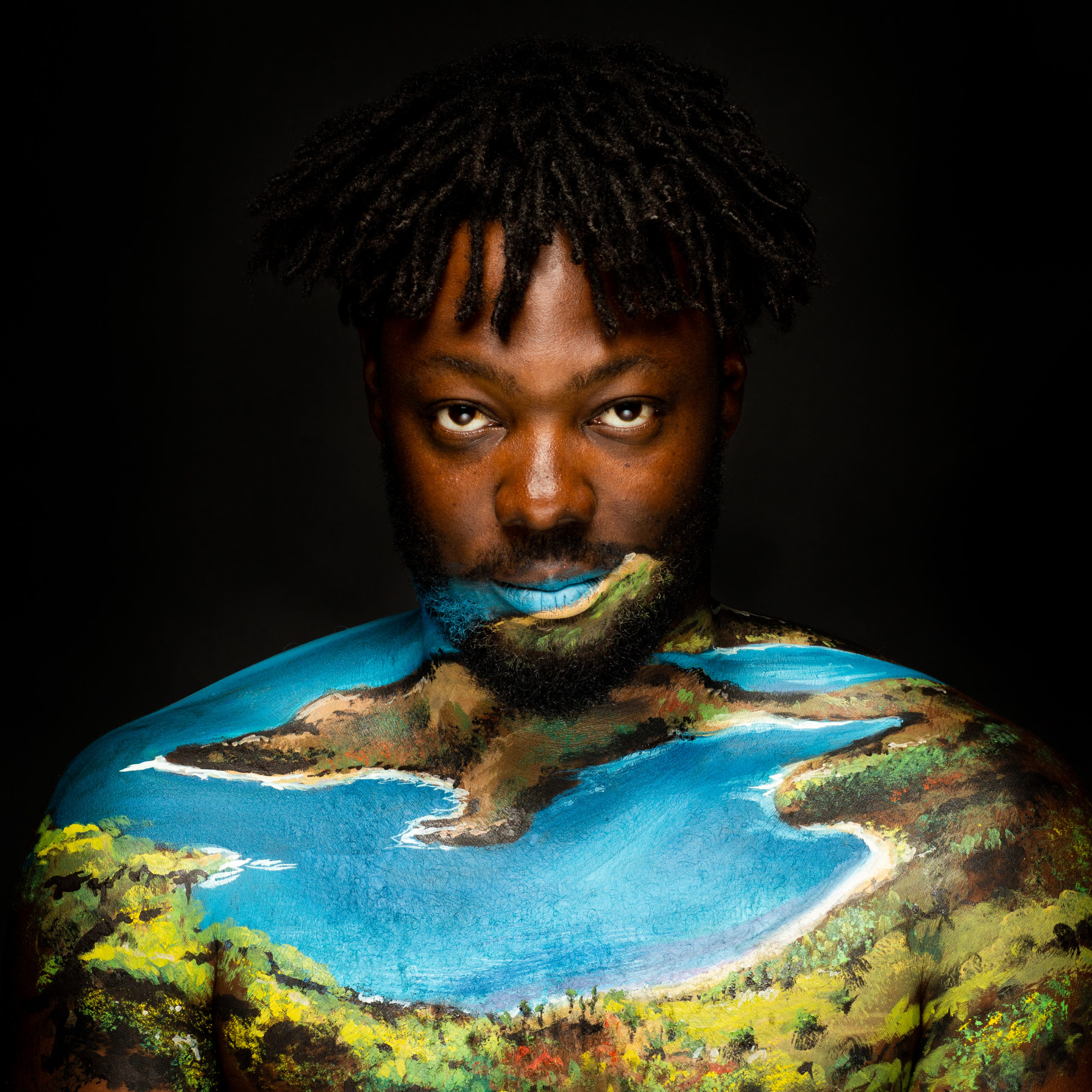
Emma Fay is a UK based artist known for her concept body artistry. Her education in the arts, beauty industry, and business allowed her to combine knowledge and skills to manipulate the human form into unique bodies of work that appear in photographed exhibits, live performances, and film. She has received Arts Council England and University Research funding to create public exhibitions and projects, alongside commissions from independent organizations supporting further understanding of health, societal, and environmental issues.
Building and living with trees in arborescent cities
In his Cité Végétale project, architect Luc Schuiten challenges viewers to rethink the city as a living, organic entity, as he reinvents buildings through the use of botanical live material that become the armature for our lived space. The ways in which Schuiten weaves the plant-world with familiar places—here, Venice, Metz, and Lyon—or futuristic unnamed cities put forth a novel approach to not only architecture, but to society’s and individuals’ relationships with the urban, where the human is no longer the primary force in the city and must learn to cohabit with the vegetal on an equal footing. Bringing into question human mastery over nature and the place of nature in human-made environments, his concept of “inhabitrees” (in French, “habitarbres”) pours viewers into an urban fantasy where each detail constitutes a moment of awareness about our relationship with nature. For example, Piazza San Marco takes vegetal depth, revealing an underground world of lush vertical greenery, where the Palazzo dei Dogi becomes a shadow at the surface while corresponding subterranean volumes expand underneath a translucent veil that echoes the square’s checkerboard paving. Schuiten’s cities ebb and flow from day to night, above and below the terrestrial surface, present and future, apparent stillness and latent movement. The illustrations elicit a level of wonder, but also some unease about the unknown, about what can become of the urban when the living trees that constitute the support for our lived spaces continue their own life cycle.
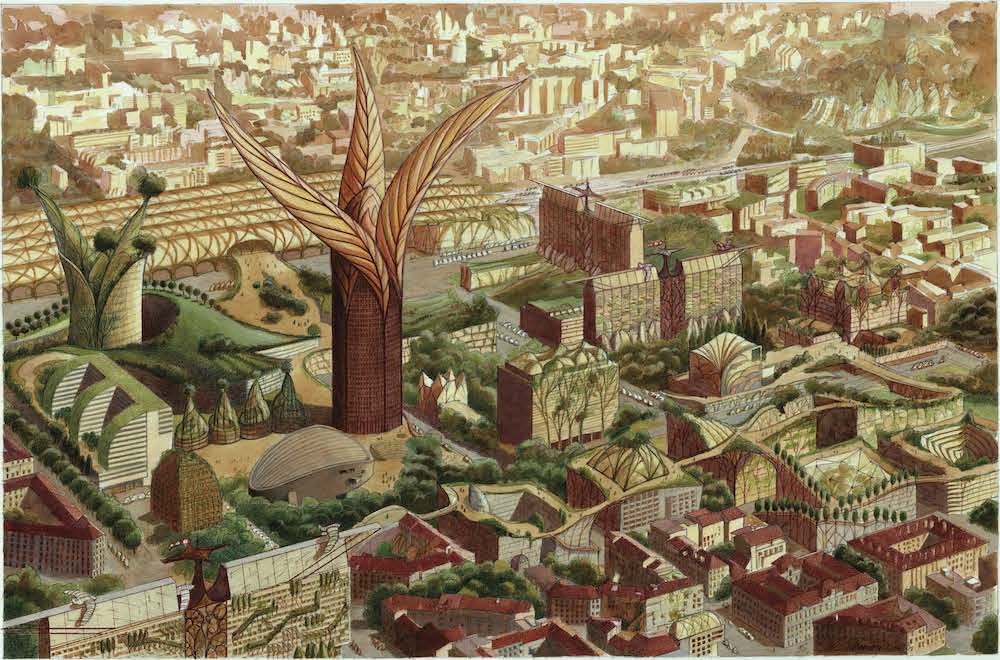
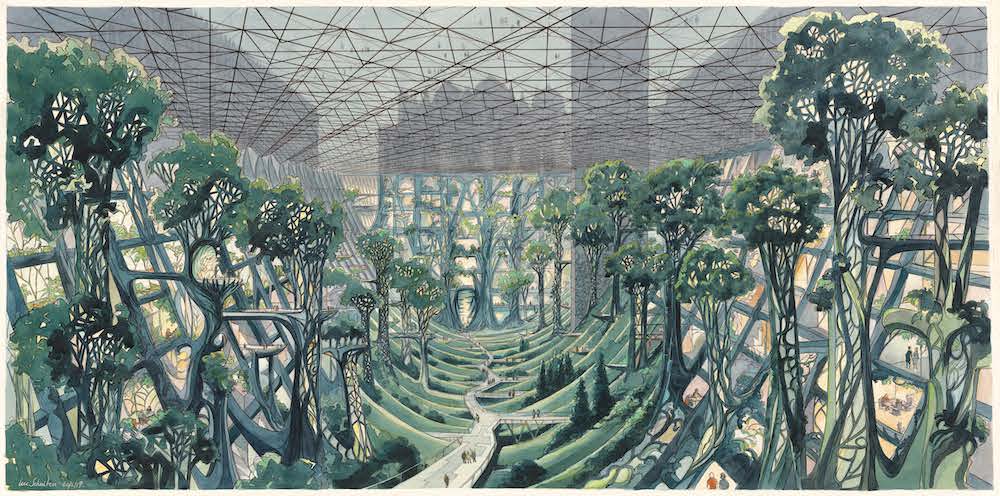
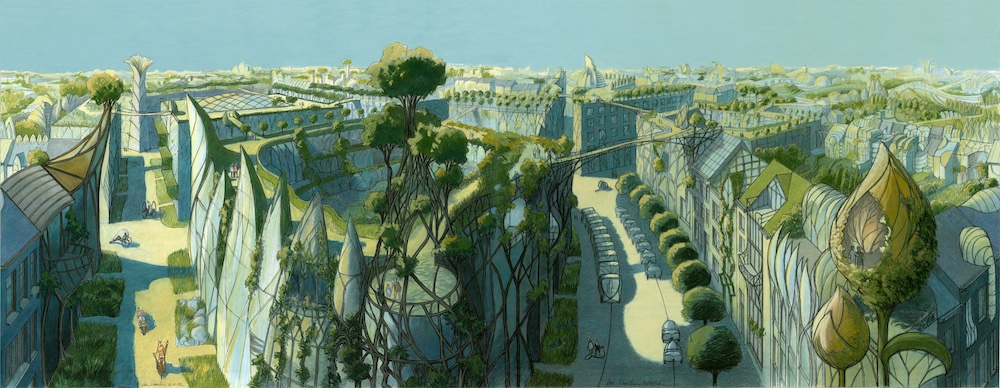
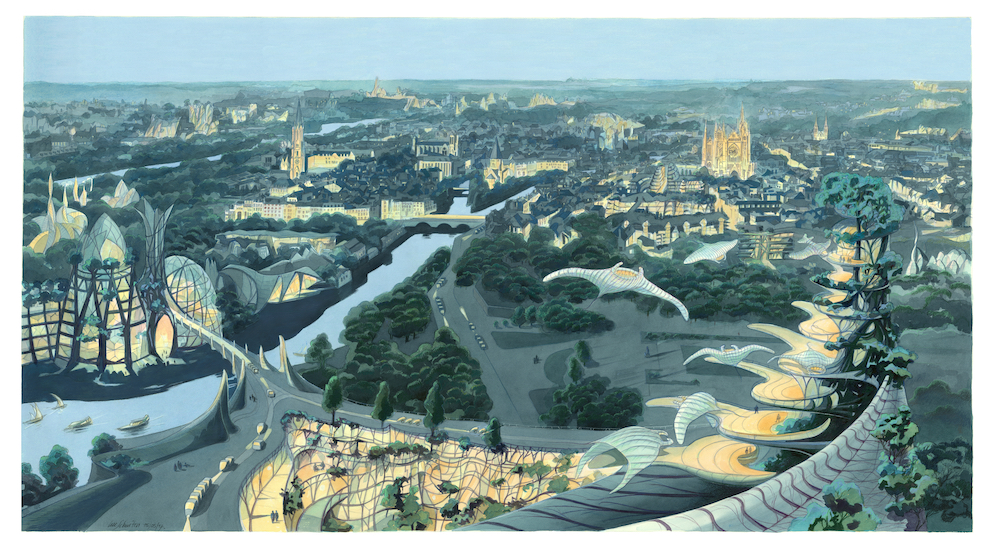
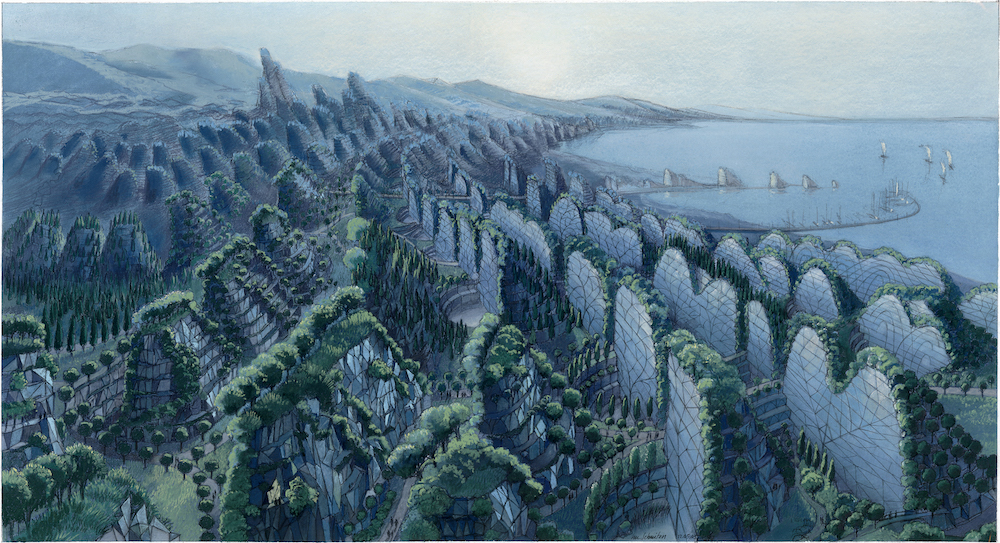
Luc Schuiten is a Belgian architect at the Atelier d’Architecture Schuiten and President of VEGETAL CITY. He is a founding member of Biomimicry Europa and Archi Human, two organizations that seek to transform the urban as to be more conscious of nature and social justice. He communicates his vision of the world through posters, conferences, books, and exhibits, for which he creates all the scenography himself.
Hélène B. Ducros (JD, PhD, University of North Carolina at Chapel Hill) is a human geographer with multi-faceted interests in people’s relationship with place and the interaction between human societies and the environment. Her latest book is Justice in Climate Action Planning (Springer 2022). She is lead editor for the joint World Society Foundation-Council for European Studies writing lab, chair of research and pedagogy at EuropeNow Journal, and co-chair of the CES Critical European Studies Research Network.
Published on November 9, 2021

